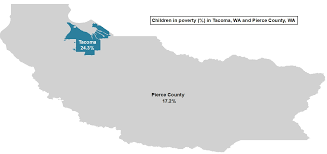The State with the Fewest Counties: A Comprehensive Overview
When it comes to the geographical divisions within a country, counties play a crucial role in delineating administrative boundaries. In the United States, each state is composed of various counties, which serve as important units for governance and representation. However, not all states are created equal in terms of county count. This article delves into the state with the fewest counties, examining its unique characteristics and shedding light on the implications of its limited county structure. Join us as we explore this intriguing aspect of the American landscape.
1. Understanding Counties and their Significance:
Counties are territorial divisions within a state, typically established for administrative and political purposes. They often serve as centers for local government, housing county seats where important governmental functions take place. Counties facilitate the provision of public services, such as law enforcement, education, and infrastructure development, making them fundamental to the functioning of a state.

State
2. The State with the Fewest Counties:
Among the 50 states that comprise the United States, one stands out with the fewest number of counties. That state is Delaware, located on the East Coast. Delaware is known for its compact size and historical significance, and its unique county count sets it apart from its counterparts.
3. Delaware's County Structure:
Delaware is comprised of only three counties: New Castle, Kent, and Sussex. Each of these counties has its own distinct characteristics and contributes to the overall identity and functioning of the state. Let's take a closer look at each county:
a. New Castle County:
Situated in the northern part of the state, New Castle County is the most populous and economically vibrant county in Delaware. It is home to the largest city, Wilmington, which serves as the county seat. With a rich history and a bustling urban center, New Castle County plays a crucial role in the state's economic growth and development.
b. Kent County:
Located in the central part of Delaware, Kent County is characterized by its scenic landscapes and agricultural heritage. The county seat is the city of Dover, which also serves as the state capital. Kent County's rural charm and historical landmarks make it a significant contributor to Delaware's cultural identity.
c. Sussex County:
Stretching along Delaware's southern border, Sussex County is known for its beautiful coastal areas and thriving beach communities. It is the largest county in terms of land area and offers a mix of agricultural, residential, and tourist-oriented activities. Sussex County's vibrant coastal culture attracts visitors from near and far, contributing to the state's tourism industry.

Sussex County
4. Implications of Delaware's County Structure:
While Delaware's limited number of counties may seem insignificant at first glance, it has practical implications for governance, public administration, and resource allocation. Here are some key factors to consider:
a. Efficient Governance:
With fewer counties to administer, Delaware can streamline its governance processes and allocate resources more effectively. Decision-making and policy implementation can be expedited, enabling the state to respond promptly to local needs.
b. Enhanced Collaboration:
The close-knit nature of Delaware's counties fosters collaboration and cooperation among different regions. Local governments, businesses, and communities can work closely together, leveraging their shared interests and resources for the overall benefit of the state.
c. Stronger Community Bonds:
The limited number of counties in Delaware promotes a sense of community and interconnectedness. Residents often develop a strong attachment to their county, contributing to a closer-knit society and fostering a sense of pride in local identity.
Delaware's distinction as the state with the fewest counties highlights the diversity within the United States' administrative divisions. While counties are essential components of state governance, Delaware demonstrates that efficiency and effective collaboration can be achieved even with a smaller county structure. Understanding the implications of this unique arrangement provides valuable insights into the dynamics of state administration and local community development.